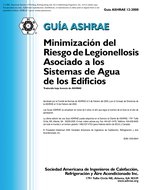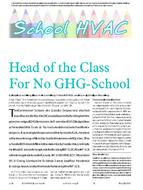In North America, the supply of combustion air to mechanical rooms is carried out under the guidelines of codes such as the Uniform Mechanical Code or it’s Canadian equivalents. When these codes specify passive openings for the supply of combustion air, they are sized and located in such a way that they will provide an adequate supply of combustion air under all weather conditions. While these codes have been successful in providing enough air for combustion purposes they often lead to over ventilation, particularly in northern regions like Alaska where severe weather can cause extreme over ventilation, which in turn can lead to freezing mechanical rooms and broken water lines. An improvement to the codes, that would account for the large seasonal variation of weather in these regions would be beneficial in preventing the oversupply of combustion air and resultant damage.
The purpose of this project was to develop and validate a set of guidelines for use in the design of combustion air systems, for heating appliances in cold climates. The guidelines were to consider the size and type of combustion appliance served, the type of enclosure (boiler/furnace room) and the climate. The scope of the project is outlined below.
• Confirmation of air volumes needed for various fuels/burners/flues.
• Determination of flue dilution quantities needed for flue systems.
• Determine impact of cold air on system design.
• Design of combustion air systems that provide adequate air.
• Field testing of prototype systems.
• Confirmation of combustion air system design methodology.
Product Details
- Published:
- 1995
- Number of Pages:
- 151
- File Size:
- 1 file , 4.1 MB
- Product Code(s):
- D-RP-735


